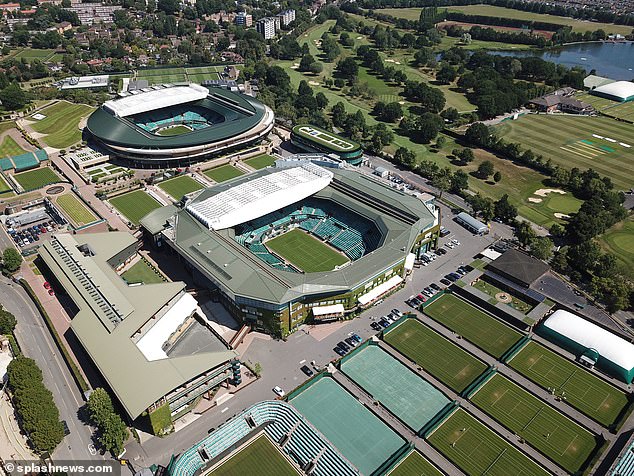What was once a long and heated debate over green space and heritage land has finally reached a turning point.
The All England Club’s bold vision to massively expand the Wimbledon tennis grounds has cleared a major legal hurdle—paving the way for one of the biggest changes to the world-famous venue in decades.
Court Sides with Wimbledon Club After Dispute Over Parkland
After a fierce legal battle, the High Court has dismissed a challenge against plans to almost triple the size of the iconic tennis grounds.
Mr Justice Saini ruled that the decision by London’s authorities to approve the £200 million development was a fair and lawful planning judgment, despite fierce opposition from local groups.
The approved expansion will transform land formerly used by Wimbledon Park Golf Club, which the All England Club acquired in stages—first buying the freehold in 1993 and then the leasehold in 2021.
What the Expansion Includes
The redevelopment plans are ambitious.
They include 38 new grass courts, a brand-new 8,000-seat stadium, and the ability to host the Wimbledon qualifying rounds on-site instead of at Roehampton.
In addition to the sports facilities, the project will create seven maintenance buildings, new access points, and 27 acres of publicly accessible parkland.
A scenic boardwalk is also planned around and across Wimbledon Lake.
According to the All England Club, this transformation will not only elevate the tournament experience but also open up previously private land to the local community for the first time in over a century.
Local Opposition and Legal Pushback
The journey to get here hasn’t been smooth.
A campaign group called Save Wimbledon Park (SWP) launched a legal fight to block the development, arguing that the park was a protected heritage site with strict usage limitations.
They cited its status as a Grade II*-listed landscape, originally designed by legendary 18th-century gardener Lancelot “Capability” Brown.
SWP’s barristers insisted that the Mayor of London’s office acted irrationally by approving the plans and highlighted concerns over “restrictive covenants” that were supposed to ensure the land remained open for public enjoyment.
Legal Arguments and Planning Judgments
Despite these concerns, the Greater London Authority (GLA) stood by its approval.
Planning permission had previously seen mixed support, with Merton Council giving it a thumbs-up while neighboring Wandsworth Council turned it down.
That left the final decision to City Hall—where Jules Pipe, the Deputy Mayor for Planning, stepped in after Mayor Sadiq Khan recused himself due to earlier public support for the scheme.
In court, barristers representing the GLA and the All England Club argued that while the legal trust and land covenants were acknowledged, they were not considered “material” enough to block the development.
Mr Justice Saini agreed, ruling that the planning process had taken into account all necessary considerations.
Looking Ahead: More Legal Hurdles Remain
Although this legal victory clears the path for construction, another case is on the horizon.
A separate High Court hearing set for January 2026 will focus on whether a statutory trust really exists over the land.
The outcome could influence future uses of the site.
Sasha White KC, speaking on behalf of the club, admitted that if the court rules the trust is valid, it could conflict with parts of the proposed development.
All England Club Celebrates Legal Win
Following the court’s ruling, Deborah Jevans, Chair of the All England Club, expressed her enthusiasm and relief.
“We are delighted that Mr Justice Saini has dismissed the challenge,” she said.
“It’s a big step forward for delivering 27 acres of new parkland and creating a permanent home for the Wimbledon Qualifying Competition.”
She emphasized the extensive community engagement that’s gone into the project, with over 10,000 locals consulted.
“The vast majority are excited for us to move forward and deliver the benefits as soon as possible.”
What Happens Next?
With planning permission secured, construction can now move ahead—though the All England Club remains cautious as it awaits the outcome of the next legal challenge in 2026.
If all goes to plan, the revamped grounds could reshape the Wimbledon experience for players, fans, and local residents alike, making it more accessible while honoring its prestigious legacy.
